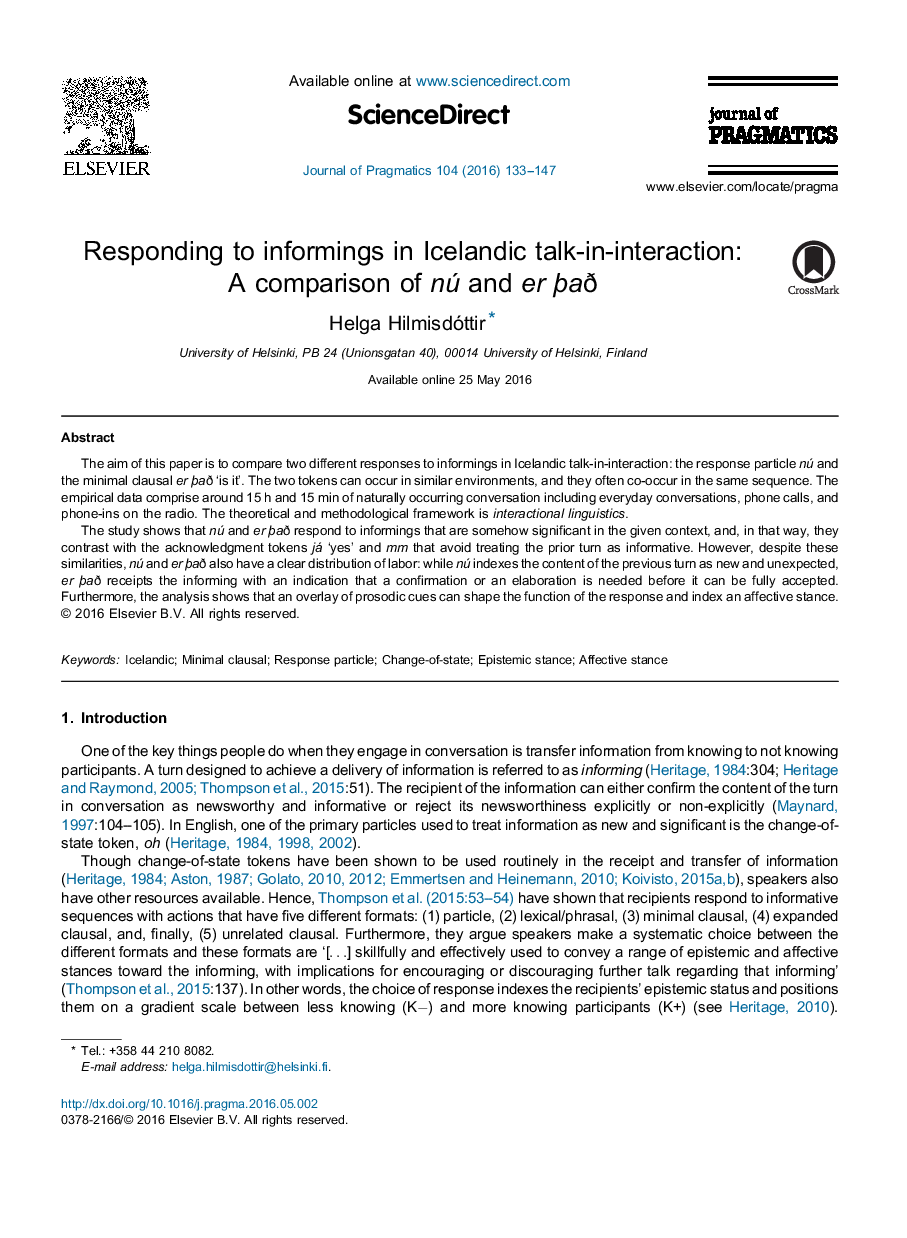| Article ID | Journal | Published Year | Pages | File Type |
|---|---|---|---|---|
| 5042818 | Journal of Pragmatics | 2016 | 15 Pages |
â¢The particle nú indexes the content of the previous turn as new and unexpected.â¢The minimal clausal er það receipts the informing with an indication that a confirmation or an elaboration is needed before it can be fully accepted.â¢The prosodic delivery of nú and er það can convey an affective stance, e.g. empathy or a degree of unexpectedness.
The aim of this paper is to compare two different responses to informings in Icelandic talk-in-interaction: the response particle nú and the minimal clausal er það 'is it'. The two tokens can occur in similar environments, and they often co-occur in the same sequence. The empirical data comprise around 15 h and 15 min of naturally occurring conversation including everyday conversations, phone calls, and phone-ins on the radio. The theoretical and methodological framework is interactional linguistics.The study shows that nú and er það respond to informings that are somehow significant in the given context, and, in that way, they contrast with the acknowledgment tokens já 'yes' and mm that avoid treating the prior turn as informative. However, despite these similarities, nú and er það also have a clear distribution of labor: while nú indexes the content of the previous turn as new and unexpected, er það receipts the informing with an indication that a confirmation or an elaboration is needed before it can be fully accepted. Furthermore, the analysis shows that an overlay of prosodic cues can shape the function of the response and index an affective stance.
